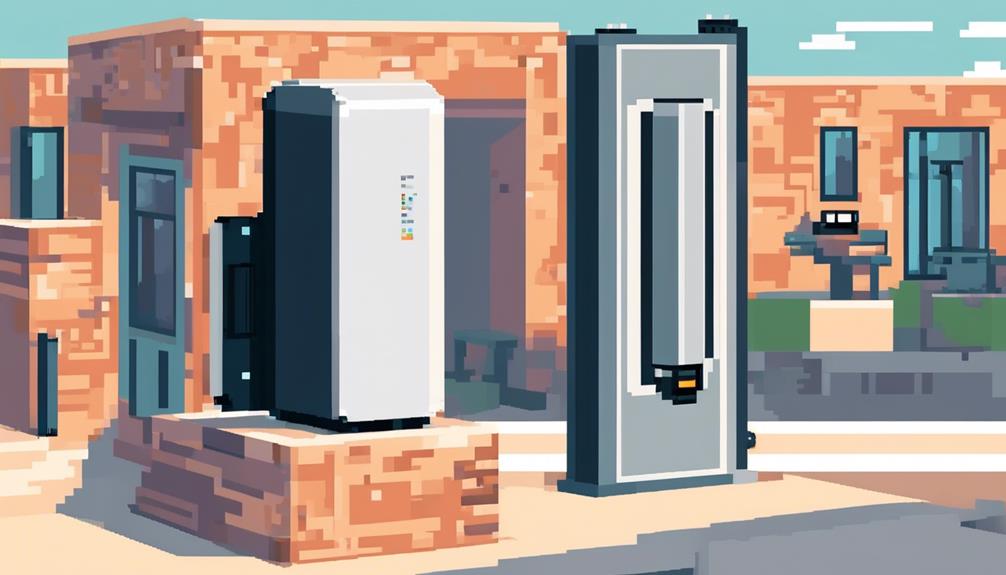When it comes to wireless connectivity, whether for personal or business use, choosing the right hardware is crucial to ensure reliable and efficient communication. One important consideration is whether to opt for indoor or outdoor wireless hardware.
Indoor and outdoor environments present unique challenges and requirements that must be taken into account when selecting the appropriate hardware. Factors such as signal strength, range, interference, and security all play a role in determining the most suitable solution.
In this discussion, we will explore the key differences between indoor and outdoor wireless hardware, the factors to consider for each scenario, the installation and maintenance aspects, and the various applications and use cases.
By the end of this discussion, you will have a comprehensive understanding of the considerations involved in choosing between indoor and outdoor wireless hardware, enabling you to make informed decisions for your specific needs.
Key Takeaways
- Indoor wireless hardware is designed for reliable WiFi signals within confined spaces, while outdoor hardware provides reliable wireless connectivity in open spaces.
- Outdoor access points have higher power built-in amplifiers for extended coverage, allowing them to cover larger areas compared to indoor access points.
- Outdoor access points often support Wireless Distribution System (WDS) for network expansion, while indoor access points may need to support a larger number of concurrent users.
- Outdoor hardware is designed to withstand various weather conditions and may have directional antennas for longer distances, while indoor hardware is optimized for use inside buildings and is not built for harsh outdoor conditions.
Key Differences Between Indoor and Outdoor Hardware

The key differences between indoor and outdoor hardware lie in their specific features, use cases, and design considerations.
While indoor and outdoor WiFi access points operate the same way in terms of signal transmission and reception, there are distinct variations in their functionalities.
Outdoor WiFi access points often come equipped with higher power built-in amplifiers, enabling them to provide extended coverage in outdoor environments. They also commonly support Wireless Distribution System (WDS), which allows for the expansion of network coverage by wirelessly connecting multiple access points. Additionally, outdoor access points may incorporate proprietary wireless bridging protocols that facilitate long-range links.
The range and compatibility of WiFi access points are determined by the IEEE 802.11 standard and are not affected by whether they are designed for indoor or outdoor use. However, the range can be optimized by using external antennas, which are not specific to either indoor or outdoor environments.
The use cases for indoor and outdoor access points differ significantly. Indoor access points are commonly used in residential homes and office spaces, where they provide WiFi connectivity within a limited area. On the other hand, outdoor access points are designed for large-scale networks in public spaces, such as parks or campuses, where they can cover expansive outdoor areas and facilitate connectivity over long distances.
Lastly, the design and purpose of indoor and outdoor antennas vary. Indoor antennas are typically designed for use within buildings and are optimized for performance in enclosed spaces. Outdoor antennas, on the other hand, are more rugged and weatherproof, capable of withstanding the elements and providing reliable signal transmission in open spaces.
Wireless Hardware for Indoor Environments
Wireless hardware designed for indoor environments is specifically engineered to provide reliable and strong WiFi signals within confined spaces, such as homes, offices, and small businesses. These devices are optimized for use inside buildings and are not built to withstand harsh outdoor conditions.
Indoor wireless hardware is typically compact and inconspicuous in design, making it suitable for use within a limited area. It is specifically designed to create reliable WiFi networks within a specific space, penetrating multiple walls if necessary. However, it is important to note that indoor antennas are not designed to cover large outdoor areas.
The main goal of indoor wireless hardware is to provide a stable and efficient WiFi connection within a confined space. These devices are equipped with features that enhance signal strength and minimize interference, ensuring a seamless experience for users. They are also designed to be easily installed on walls or ceilings, allowing for optimal coverage within the designated area.
It is essential to recognize the key differences between indoor and outdoor wireless hardware. While indoor devices are tailored for small, enclosed areas, outdoor hardware is designed to cover larger outdoor spaces, such as parks, stadiums, or campuses. Outdoor equipment is built to withstand various weather conditions and is typically more rugged and durable.
Wireless Hardware for Outdoor Environments

Moving from discussing indoor wireless hardware, we now shift our focus to the realm of outdoor environments and the specific requirements for wireless hardware in these settings.
Outdoor WiFi access points are designed to provide reliable wireless connectivity in open spaces and withstand various weather conditions. One key difference between indoor and outdoor access points is the built-in power amplifiers in their radios. The higher power enables outdoor access points to cover larger areas and overcome obstacles such as trees and buildings.
In addition to increased power, outdoor access points often support WDS (Wireless Distribution System) for extending network coverage. WDS allows multiple access points to connect wirelessly, creating a seamless network that can reach even further distances. This feature is particularly useful in outdoor environments where large areas need to be covered.
Another important consideration for outdoor wireless hardware is the use of antennas. Outdoor antennas are designed to reach longer distances compared to indoor antennas. They are better suited for outdoor environments where there may be fewer obstacles and walls to penetrate. Additionally, outdoor antennas may have directional signals using parabolic antennas. These antennas focus the radiated energy in a specific direction, allowing for long-range communication.
Factors to Consider for Indoor Wireless Hardware
When considering indoor wireless hardware, there are several important factors to take into account. While outdoor access points may have higher power amplifiers and support features like mesh schemes and Power over Ethernet (PoE), indoor access points have their own unique considerations.
One important factor is the coverage area. Indoor access points are typically designed to provide coverage within a specific building or room, whereas outdoor access points are meant to cover larger outdoor areas. This means that indoor access points may require more access points to cover the same area as an outdoor access point.
Another factor to consider is interference. Indoor environments can be crowded with other devices that use the same frequency spectrum as WiFi, such as microwaves and cordless phones. This can lead to increased interference and decreased performance. It is important to choose indoor access points that have features like dynamic frequency selection (DFS) and interference mitigation techniques to minimize the impact of interference.
In addition, indoor access points often need to support a larger number of concurrent users compared to outdoor access points. This means that indoor access points should have higher capacity and better performance to handle the increased traffic.
Furthermore, indoor access points may need to be aesthetically pleasing and blend into the environment. This means that the physical design and form factor of the access point should be considered.
Factors to Consider for Outdoor Wireless Hardware

When considering outdoor wireless hardware, there are several factors that need to be taken into account.
The first is weatherproofing considerations, as the hardware must be able to withstand various weather conditions.
Secondly, signal range limitations should be considered to ensure sufficient coverage across the outdoor environment.
Lastly, power supply requirements, such as the support for Power over Ethernet, are important for convenient installation in outdoor settings.
Weatherproofing Considerations
To ensure optimal performance and longevity of outdoor wireless hardware, it is imperative to carefully consider weatherproofing factors. Outdoor access points are exposed to various weather conditions such as rain, snow, heat, and humidity, which can significantly impact their performance and durability.
When selecting outdoor wireless hardware, it is crucial to choose devices that are specifically designed for outdoor use and are waterproof. Here are two key weatherproofing considerations for outdoor wireless hardware:
- Waterproof Enclosure: Outdoor access points should be housed in a waterproof enclosure to protect them from moisture and water damage. The enclosure should have proper sealing to prevent water ingress and should be made of durable materials that can withstand harsh weather conditions.
- Cable Management: Proper cable management is essential to prevent water from seeping into the device through cable entry points. Outdoor access points should have waterproof cable glands or connectors to ensure a secure and watertight connection.
Signal Range Limitations
Signal range limitations for outdoor wireless hardware are influenced by various environmental factors, including weather conditions, terrain features, obstructions, and the type of antennas used.
Outdoor access points (APs) are designed to provide wireless network coverage in outdoor environments, but their signal range can be affected by these factors. Terrain features such as hills, trees, and buildings can significantly reduce the effective range of outdoor APs. Additionally, the presence of water bodies and other wireless signals in the area can interfere with and limit the range of outdoor wireless hardware.
To optimize signal range and minimize limitations, proper positioning and alignment of outdoor APs are essential. The type and quality of antennas used in outdoor wireless hardware also play a crucial role in determining the signal range and coverage area.
Power Supply Requirements
Considering the power supply requirements for outdoor wireless hardware, it is crucial to address the need for weatherproof and durable enclosures to withstand outdoor conditions. To further emphasize this point, there are two key factors to consider:
- Power over Ethernet (PoE): Outdoor access points often require PoE for easy installation without the need for AC power. This allows for flexibility in placement and reduces the complexity of wiring.
- Higher Power Amplifiers: Outdoor hardware may require higher power built-in amplifiers in their radios to provide extended coverage. This ensures that the wireless signals can reach a wider area, overcoming obstacles and potential interference.
Additionally, the power supply for outdoor hardware should be capable of supporting the 4.9GHz band for licensed applications, such as public safety. This ensures that the hardware can operate in the appropriate frequency range and provide reliable communication.
Performance Comparison: Indoor Vs Outdoor Hardware

When comparing the performance of indoor and outdoor wireless hardware, the main factors to consider are the power and range capabilities. Outdoor access points typically have higher power built-in amplifiers and support for wireless distribution systems and proprietary wireless bridging protocols, allowing them to provide a stronger and more reliable connection over longer distances. However, it is important to note that the range and penetration power of WiFi access points are determined by the power and gain of the antenna, regardless of whether they are classified as indoor or outdoor.
To help illustrate the performance differences between indoor and outdoor hardware, the following table provides a comparison of key features:
| Performance Factors | Indoor Hardware | Outdoor Hardware |
|---|---|---|
| Power | Lower | Higher |
| Range | Shorter | Longer |
| Antenna Design | Compact | Rugged |
| Mounting Options | Limited | Versatile |
| Weather Resistance | N/A | High |
Indoor WiFi access points are commonly used in homes, offices, and small businesses where the range requirements are typically shorter. They are designed to be compact and aesthetically pleasing, blending seamlessly with the indoor environment. On the other hand, outdoor access points are suitable for creating large-scale wireless networks in outdoor environments. They feature rugged antenna designs, versatile mounting options, and high weather resistance to withstand harsh outdoor conditions.
Security Considerations for Indoor and Outdoor Hardware
To ensure the security of both indoor and outdoor wireless hardware, it is essential to implement comprehensive measures that protect against unauthorized access, data breaches, physical tampering, and extreme weather conditions. When considering the security of outdoor access points, additional precautions are required due to the increased exposure to potential risks.
To effectively secure both indoor and outdoor wireless networks, the following security considerations should be taken into account:
- Physical Protection:
- Outdoor hardware is more vulnerable to physical tampering and vandalism. Therefore, it is crucial to implement measures such as tamper-proof enclosures, secure mounting options, and surveillance systems to deter and detect unauthorized access.
- Extreme weather conditions can pose a threat to outdoor hardware. Therefore, it is important to choose equipment that is designed to withstand harsh environmental factors such as temperature fluctuations, moisture, and dust.
- Data Protection:
- Security protocols and encryption methods should be carefully implemented to safeguard data transmission for both indoor and outdoor hardware. This includes using strong encryption algorithms, regularly updating firmware and software, and enforcing secure authentication and access control mechanisms.
- Access control and monitoring systems play a vital role in ensuring the security of wireless networks. These systems should be used to manage and monitor user access, detect and respond to any suspicious activities, and provide real-time alerts for potential security breaches.
Installation and Maintenance of Indoor Wireless Hardware

The installation process of indoor wireless hardware involves mounting access points on ceilings or walls and connecting them to the power and network infrastructure. This ensures optimal coverage and signal strength throughout the building.
Maintenance requirements for indoor wireless hardware include regular monitoring of signal strength, firmware updates, and troubleshooting any connectivity issues that may arise for end-users within the building.
Installation Process
Proper placement and regular maintenance are crucial for ensuring optimal coverage and performance of indoor wireless hardware.
During the installation process, there are several factors to consider.
First, it is important to carefully position the indoor access points to maximize coverage area and minimize signal interference. Potential sources of interference include electronic devices and building materials, such as concrete walls or metal structures.
Secondly, after the installation, it is essential to test the signal strength and coverage area to ensure that the desired performance is achieved. Regular updates and maintenance should also be performed to ensure consistent performance.
Additionally, it is important to consider future scalability and expansion needs when installing indoor wireless hardware to avoid potential limitations in the future.
Maintenance Requirements
Regular inspection, cleaning, and monitoring are essential maintenance requirements for ensuring the optimal performance of indoor wireless hardware.
Indoor wireless hardware, such as access points, requires regular physical inspections to check for any signs of damage, loose connections, or wear and tear.
Firmware updates and software patches must be periodically applied to ensure security and functionality.
Proper ventilation and temperature control in indoor areas where wireless hardware is installed is crucial for maintaining optimal performance.
Interference from other electronic devices in the vicinity must be constantly monitored and managed to prevent signal degradation.
Compared to outdoor wireless hardware, indoor hardware typically has a simpler maintenance process due to its protected environment. However, it is still necessary to follow manufacturers' guidelines and recommendations for maintenance to ensure long-term performance and reliability.
Installation and Maintenance of Outdoor Wireless Hardware
To ensure optimal performance and longevity of outdoor wireless hardware, careful attention must be given to its installation and maintenance.
Outdoor access points differ from their indoor counterparts in terms of functional differences and their ability to penetrate walls. When it comes to installation, here are two key points to consider:
- Power Amplifiers: Outdoor WiFi access points often have higher power built-in power amplifiers in their radios. This allows them to transmit signals over longer distances and provide wider coverage. During installation, it is crucial to position these access points strategically to maximize signal strength and minimize interference.
- Antenna Selection: Outdoor access points may have directional signals using parabolic antennas for long-range communication. These antennas are designed to focus the signal in a specific direction, increasing the range of the access point. Proper alignment and orientation of the antennas are essential during installation to ensure optimal signal strength and coverage.
Maintenance of outdoor wireless hardware is equally important to keep the network up and running smoothly. Here are two maintenance tasks to prioritize:
- Weatherproofing: Outdoor antennas and access points are designed to withstand varying weather conditions. However, regular inspection and maintenance are necessary to ensure that the hardware remains waterproof and protected from environmental factors such as rain, snow, and extreme temperatures.
- Firmware Updates: Like any other networking equipment, outdoor access points require regular firmware updates to improve performance, fix bugs, and address security vulnerabilities. It is essential to stay up-to-date with the latest firmware releases and apply them promptly to keep the network secure and efficient.
Applications and Use Cases for Indoor and Outdoor Hardware

When considering the applications and use cases for indoor and outdoor hardware, several factors need to be taken into account.
One important consideration is the environment in which the hardware will be deployed. Outdoor hardware is designed to withstand harsh weather conditions and provide coverage over larger outdoor areas, making it ideal for parks, stadiums, and campuses.
On the other hand, indoor hardware is optimized for providing strong signals within confined areas such as homes, offices, and small businesses.
Additionally, connectivity requirements and physical durability are also key factors to consider when choosing between indoor and outdoor hardware.
Environment Considerations
Indoor and outdoor WiFi access points have distinct applications and use cases, which are influenced by environmental considerations.
When it comes to outdoor access points, their primary purpose is to provide coverage in open spaces such as parks, stadiums, and outdoor events. These access points are designed to withstand harsh weather conditions and are often waterproof, ensuring their durability in outdoor environments. Additionally, outdoor access points are equipped with more powerful built-in power amplifiers in their radios, allowing for longer-range coverage.
On the other hand, indoor access points are commonly found in homes, offices, and small businesses. They are designed with indoor antennas that focus the radiated energy in a specific direction, maximizing coverage within a confined space.
Connectivity Requirements
Connectivity requirements for indoor and outdoor hardware vary based on their specific applications and use cases. Outdoor access points (APs) are designed to withstand harsh weather conditions and provide extended coverage in open spaces such as parks, stadiums, and campuses. They often have higher power built-in amplifiers and support for proprietary wireless bridging protocols. In contrast, indoor APs are used in homes, offices, and small businesses. They prioritize signal quality and density in confined spaces. To illustrate the differences, consider the following table:
| Connectivity Requirement | Outdoor APs | Indoor APs |
|---|---|---|
| Weatherproof Enclosure | Yes | No |
| Support for Proprietary Wireless Bridging Protocols | Yes | No |
| Use Cases | Parks, stadiums, campuses | Homes, offices, small businesses |
| Extended Range | Yes | No |
| Mesh Support | Yes | No |
Understanding these connectivity requirements is crucial in selecting the appropriate wireless hardware for specific environments and use cases.
Physical Durability
Physical durability is a crucial factor to consider when selecting wireless hardware for outdoor applications and use cases. Outdoor access points and antennas need to withstand extreme weather conditions such as rain, snow, and high temperatures. To emphasize the importance of physical durability, consider the following:
- Weatherproofing: Outdoor hardware is designed to be waterproof and resistant to environmental factors. This allows it to function reliably even in harsh conditions.
- Ruggedness: Outdoor access points are built to withstand physical stressors like impacts and vibrations. They are often made with durable materials and have reinforced housing.
- Radiated Energy: Outdoor antennas are designed to radiate energy over a larger area, providing extended coverage in open spaces. They are often mounted on poles or rooftops for optimal performance.
Frequently Asked Questions
What Is the Difference Between Indoor and Outdoor Wi-Fi Extenders?
Indoor and outdoor Wi-Fi extenders differ in terms of signal strength, range, and application.
Indoor extenders are designed to boost the Wi-Fi signal within a confined space, such as homes or offices. They provide a reliable connection and can enhance coverage in multiple rooms.
On the other hand, outdoor extenders are built to extend the Wi-Fi signal to outdoor environments, offering greater range and coverage in open spaces. However, they may have limitations due to weather conditions and external interference.
Is Indoor or Outdoor Wi-Fi Antenna Better?
When comparing indoor and outdoor WiFi antennas, several factors come into play.
Signal strength is typically higher with outdoor antennas due to their larger size and higher gain.
Outdoor antennas are also designed to be weather-resistant, able to withstand elements like rain and UV exposure.
Installation complexity can vary between indoor and outdoor antennas, with outdoor antennas often requiring more extensive mounting and grounding.
What Is Indoor and Outdoor Access Point?
Indoor and outdoor access points are wireless devices used to connect devices to a network.
Indoor access points are typically used in homes, offices, and small businesses, while outdoor access points are designed for large-scale outdoor networks.
Outdoor access points have higher power amplifiers and can withstand harsh weather conditions.
The range of a WiFi signal depends on the power and gain of the antenna, regardless of whether it is indoor or outdoor.
Considerations for choosing between indoor and outdoor access points include location, coverage requirements, and environmental factors.
Outdoor access points offer extended coverage and are ideal for outdoor environments.
Do I Need an Outdoor Access Point?
Considering whether or not to invest in an outdoor access point depends on several factors.
Pros of outdoor wireless networks include extended range, higher power amplifiers, and the ability to withstand outdoor conditions.
However, there are cons to consider as well, such as the need for weatherproof enclosures and the potential impact of weather conditions on performance.
When choosing between indoor and outdoor access points, factors like network coverage, budget, and specific use cases should be taken into account.
Additionally, for maximizing the range and coverage of indoor access points, strategic placement and proper configuration are essential.
